1882 Chaffee-Reece, U.S. Trials Rifle of 1884

Origins
With the advent of the black powder cartridge rifle, and following the U.S. Civil War, there was roughly a quarter century's worth of innovative long arm development. Many of these designs were literally obsolete before the ink on the drafting blueprint was dry. This journey of growing pains, successes and failures, gave rise to the modern bolt action, smokeless powder cartridge rifle which we know today. One of the detours along the way produced the 1882 Chaffe-Reece.
During the time that the single shot, cartridge loading Springfield Model 1873 Trapdoor in .45-70 was the official U.S. service rifle, several multiple shot, magazine-fed rifles were starting to show promise. Three of them which were authorized for troop trials were the 1879 Remington-Lee with a six round capacity, and a spring-fed detachable magazine under the breech, the 1879 Winchester-Hotchkiss with a six round capacity, and a spring-fed tubular magazine in the buttstock, and the 1882 Chaffe-Reece (built at Springfield Armory in 1884) with a six round capacity, and ratchet bar-fed tubular magazine in the buttstock. Seven hundred fifty each of the three magazine rifles were submitted for trials, and endured approximately one year's worth of field testing against the Springfield Model 1873 Trapdoor. All rifles were chambered in .45-70 Govt.
While the Lee had the most favorable reports, the Hotchkiss second, and the Chaffee-Reece last, none of them ranked well against the utility of the Trapdoor, and no changes to the armament of U.S. Armed Forces were recommend as the result of the trials. It was not until 1892 that the U.S. Army would adopt a bolt action as the main service rifle, the Krag-Jorgensen.
See the following post for the Chief of Ordnance report and Trials test result summary.

Production
Developed by R.S. Chaffee and General J.N. Reece, the original design was licensed with Colt's Patent Fire Arms Manufacturing Company. It is unknown how many prototypes were developed, but only to say that very few came from Colt. When approached by the U.S. Government, Colt could not meet the required 750 trials rifle quota nor price point (only 200 units were promised at $150 each), so the contract was offered to Springfield Armory. My Chaffe-Reece is one of the 753 total units produced at Springfield in 1884, at a cost of $56.28 per unit. None of them were serial numbered. The stock, trigger bow, bands, cleaning rod, swivels and sighting borrowed heavily from the Trapdoor design.
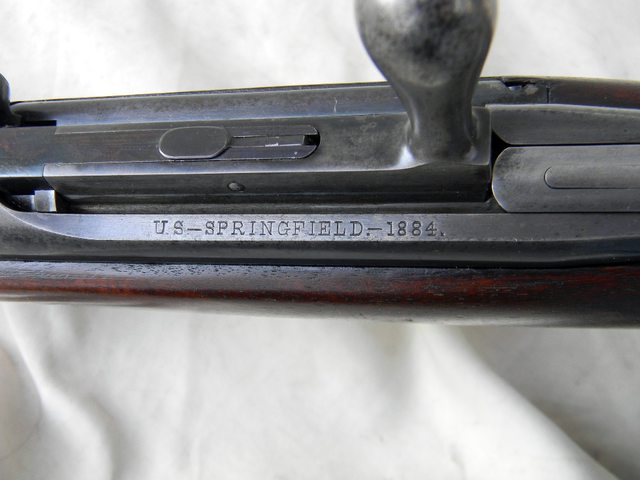
- - - Updated - - -
1882 Chaffee-Reece Features and Operation
The 28 inch barrel has the standard V over P over Eagle stamp. The Model 1879 Trapdoor carbine rear sight is a combination ramp with slider and flip-up leaf. It is calibrated from 1-600 yards on the ramp, and 7-1,400 yards upright. Both the letters 'C-R' (for Chaffe-Reece?) appear on the left base, instead of the usual 'C' which is found on carbine sights, or 'R' for rifle.
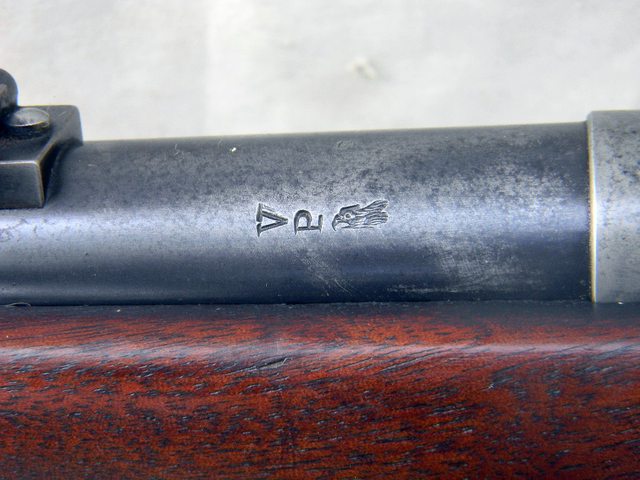
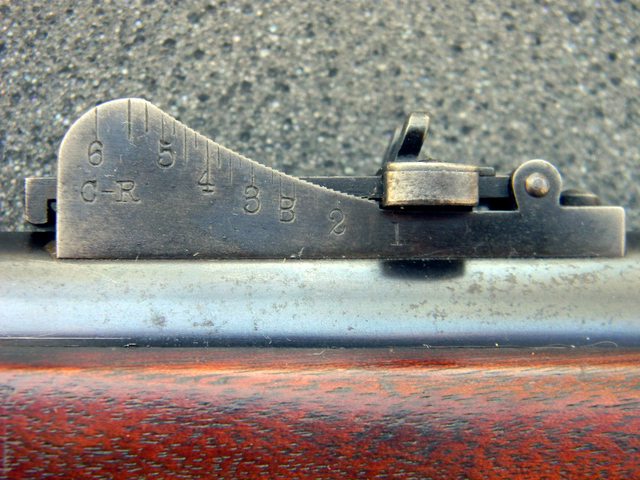
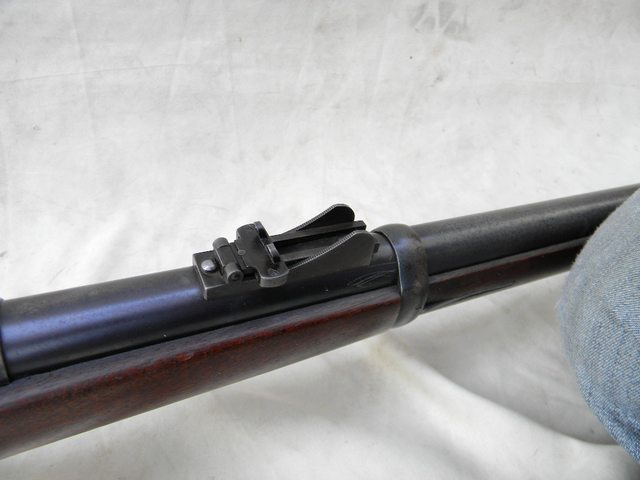
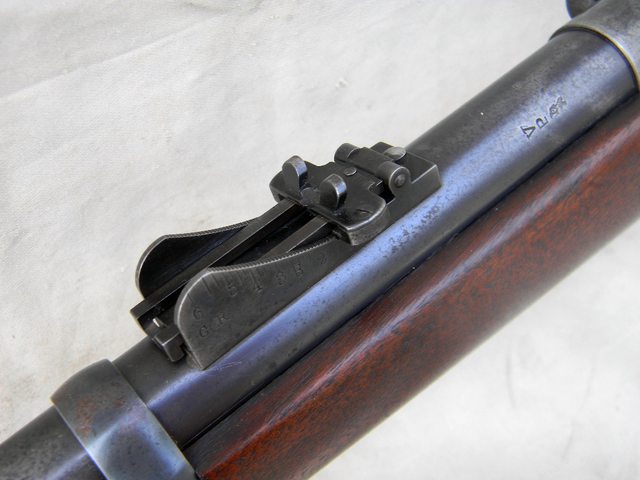
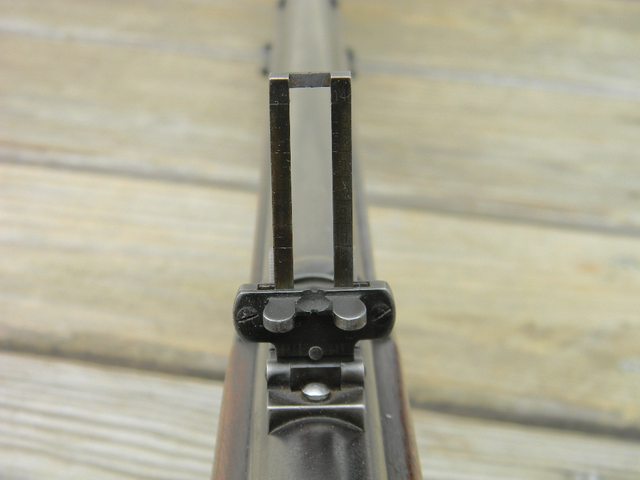
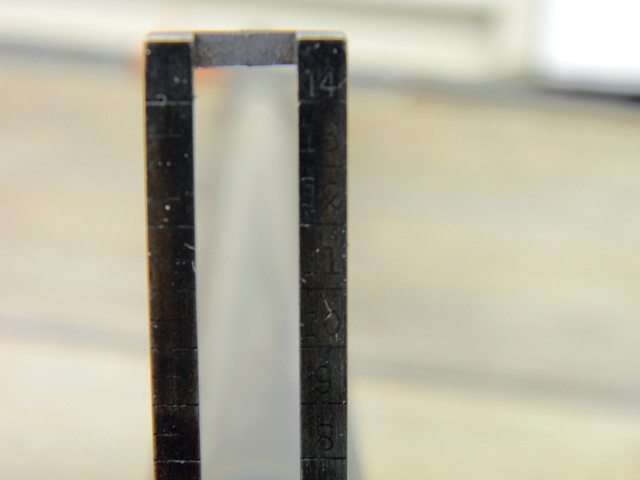
The stock has the script circle-P proof behind the trigger guard, and the 1884 cartouche with inspector initials of SM on the upper left rear buttstock. The rear sling swivel is on the front of the trigger bow, front sling and stacking swivels are on the forward barrel band. The standard 'U', for up, is stamped on both front and rear barrel bands.
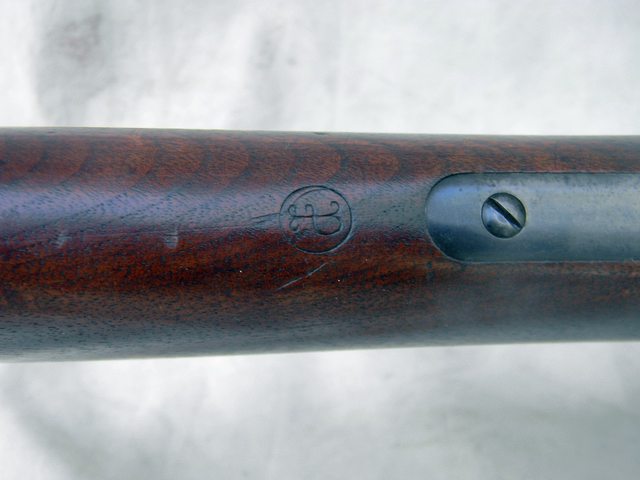
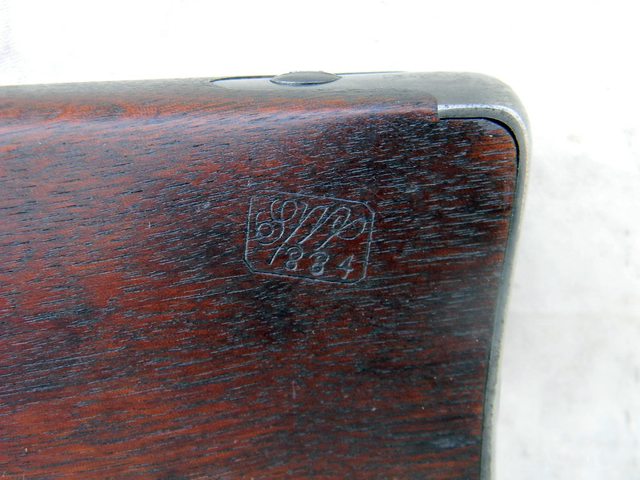
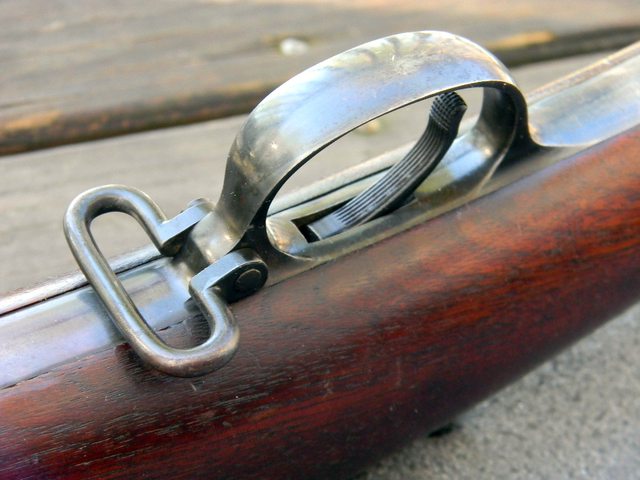
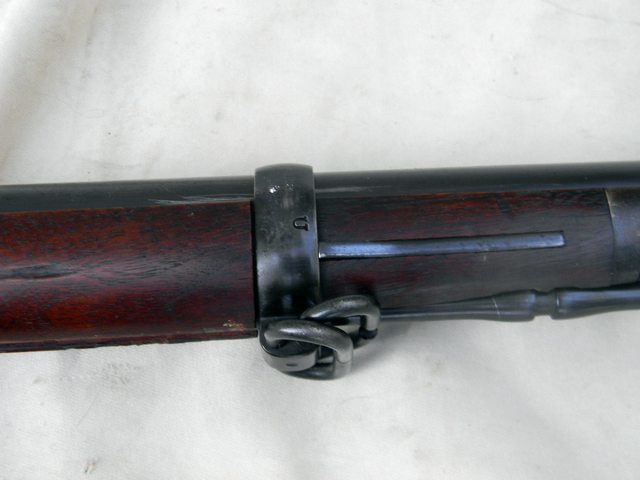
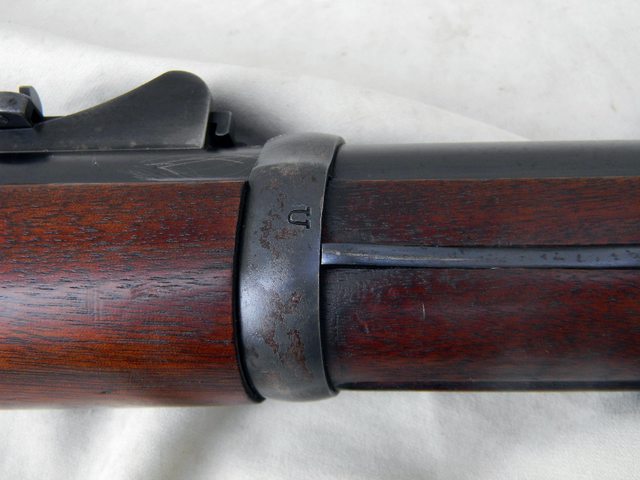
The Chaffee-Reese was built to accept the standard U.S. socket bayonet for the Trapdoor rifle, to affix with a 90 degree rotation and lockring behind the front sight base. The cleaning rod is also styled after the Trapdoor design.

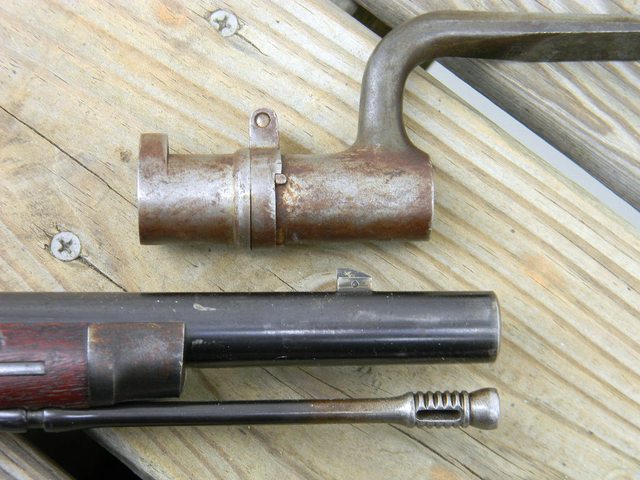
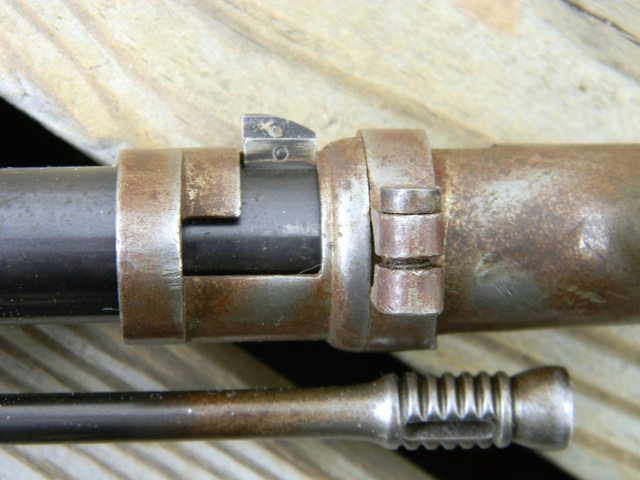
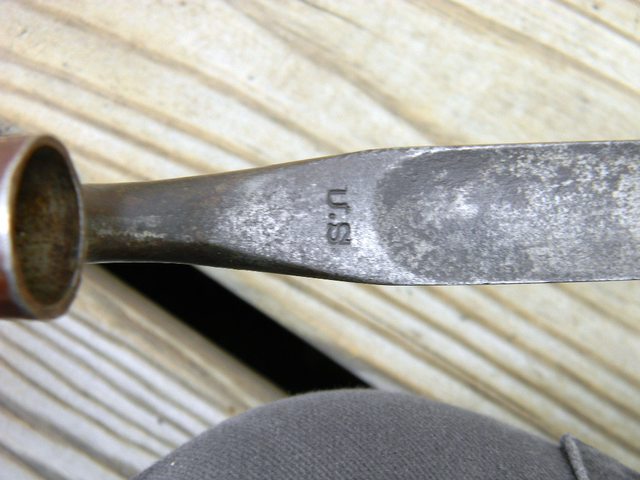
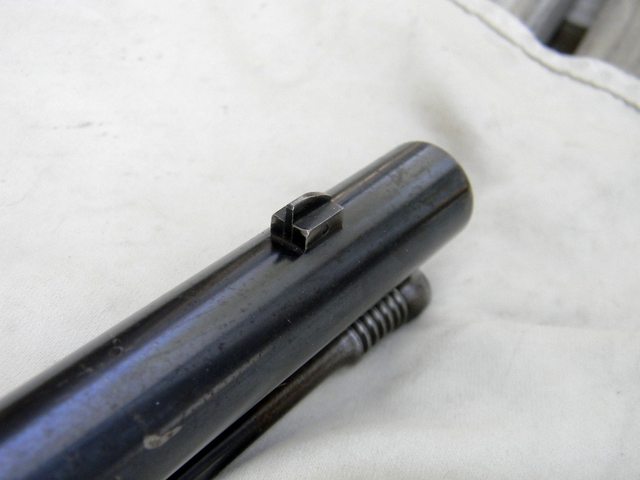
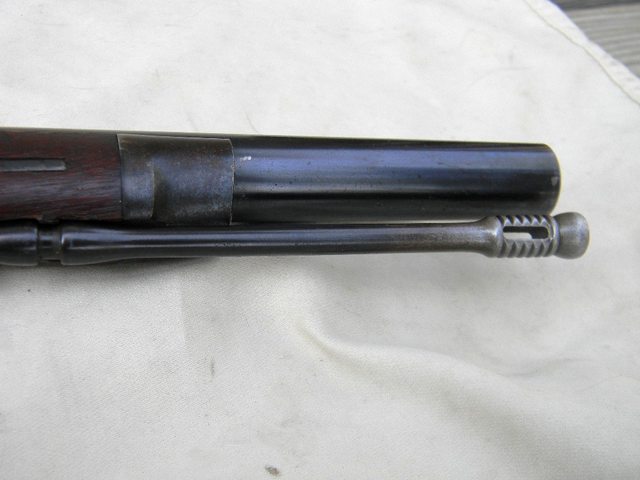
Now to the tube magazine/bolt/cut-off system. Many remaining examples of the Chaffee-Reece are missing parts or all of the feed system. Mine is fortunately completely intact.
The magazine was not spring loaded, and instead employed a complicated ratchet operation utilizing a lever, cam, and dual bar system, with linear loading through a trap door into a tube in the buttstock. I am not going to disassemble to inspect the magazine system, but I can observe operating function through the trap door while opening and closing the bolt. So I will do my best to describe the complicated operation.
To begin, it was important to the tests that the rifles colud be operated in single and multi-shot modes. As no trigger/sear safety was incorporated, there was a need for half and full-cocked bolt operation.
Cut-off engaged in forward position, single shot mode. Cut-off disengaged in rearward position, magazine feed mode.
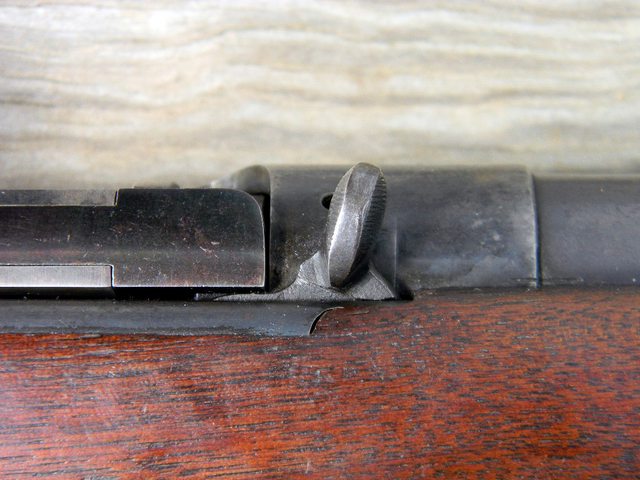
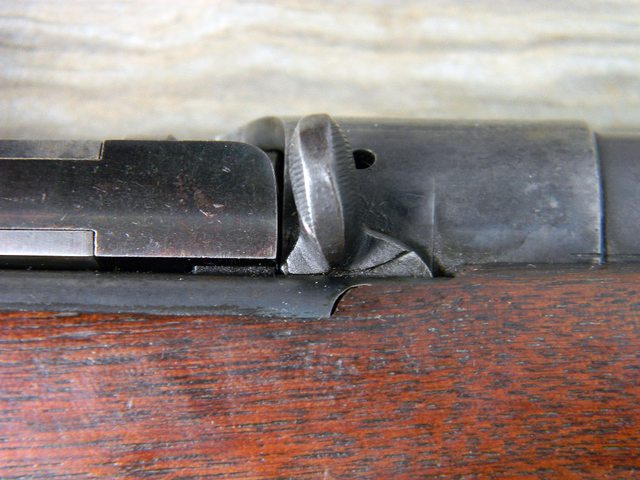
Bolt, half and full-cocked positions
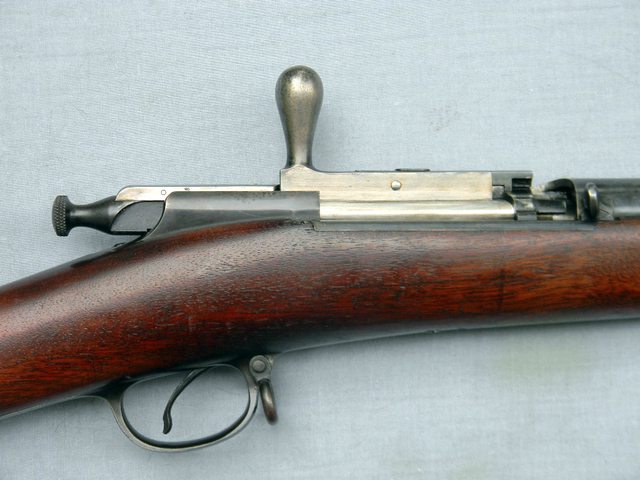
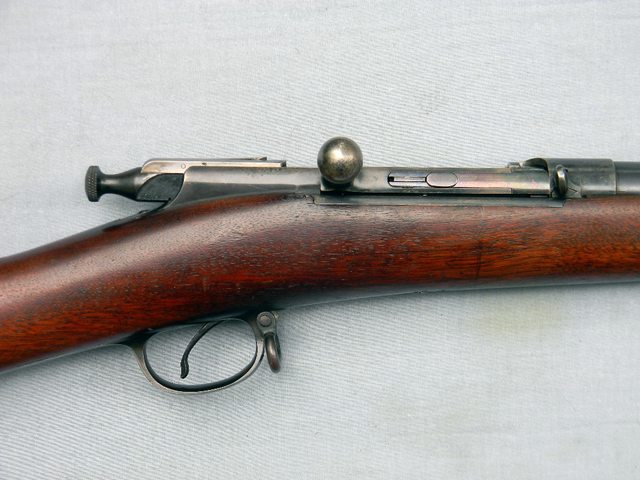
One of the drawbacks of the design was the difficulty of takedown for cleaning. I have not field stripped, nor can I find instructions for field stripping. But my experience tells me that a pin must be driven out of the bolt before the release lever can be pulled.
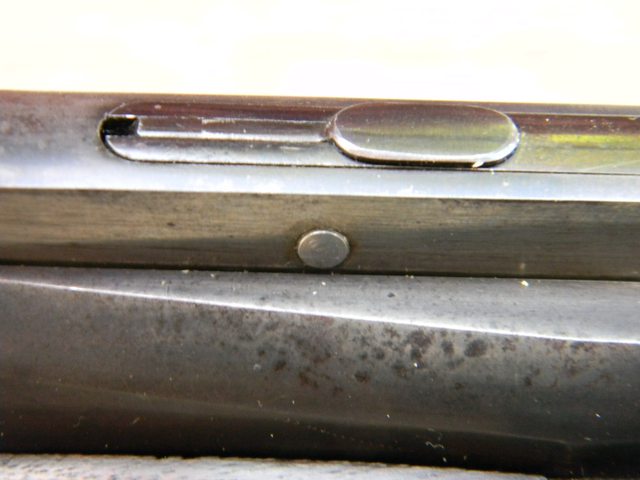

The bolt extractor is connected to a sliding lever along the right lower side of the receiver. The lever follows rearward to the magazine tube and enables the cam and ratcheting motion for cartridge feed.
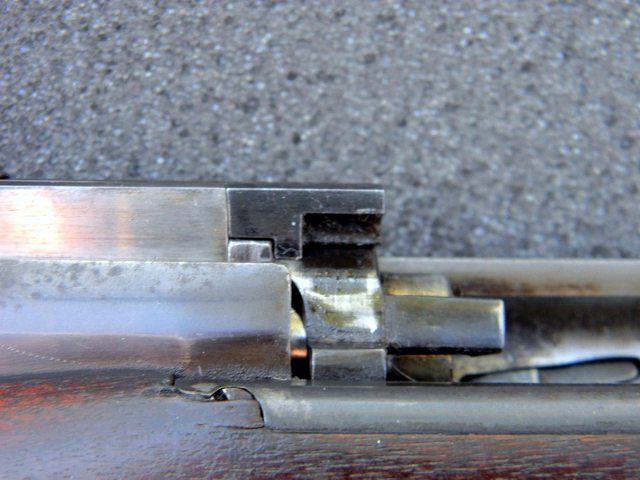
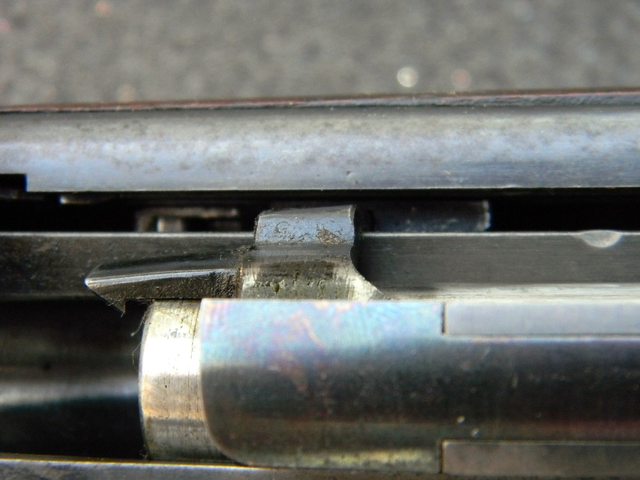
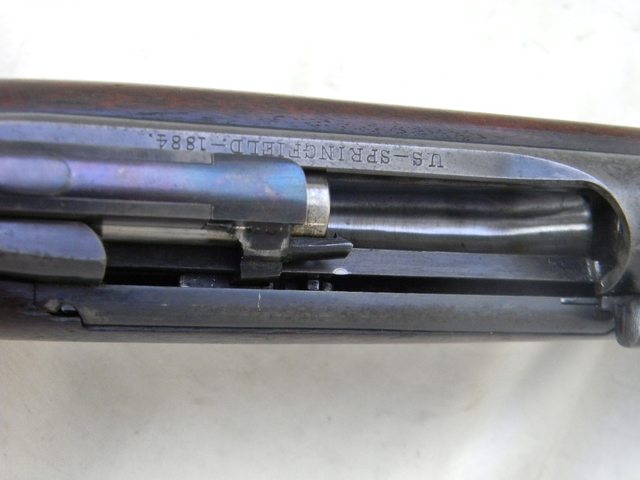
Please excuse my crude freehand artistic skills! Below is a simplified drawing of the magazine tube and feed mechanism. Two bars are positioned along the bottom length of the tube. The bar on the left is of uniform construction. It has cam operated upward travel to secure the position of the cartridges in the tube when the bolt is either in the fully closed position, or when the bolt is traveling rearward. While the bolt closes on forward motion, the left bar has downward travel to release pressure against the cartridges, allowing them to feed forward.
The cam and lever operated bar on the right has five notches. It travels up and down, forward and rearward. The right bar only has contact with the cartridges during the bolt closing motion, when it feeds the cartridges forward.
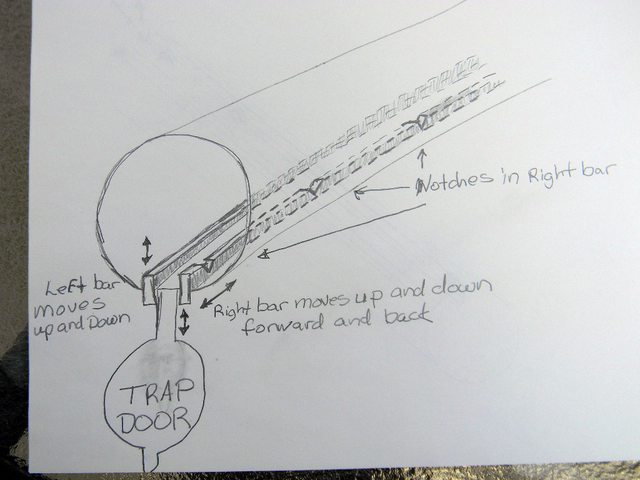
Since I did not disassemble, the following pictures are the best I can manage for the tube feed mechanism.
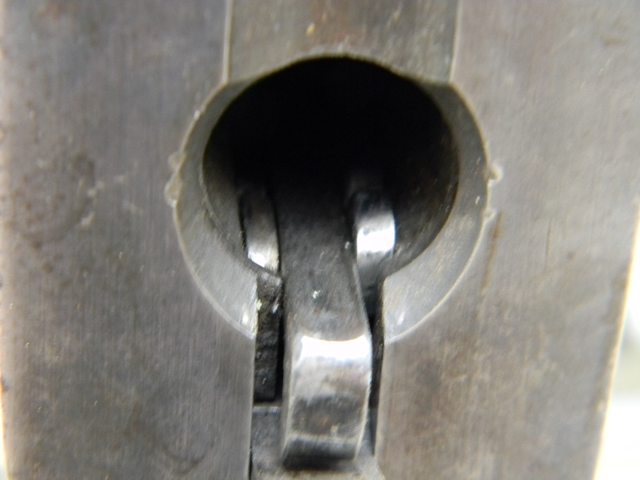
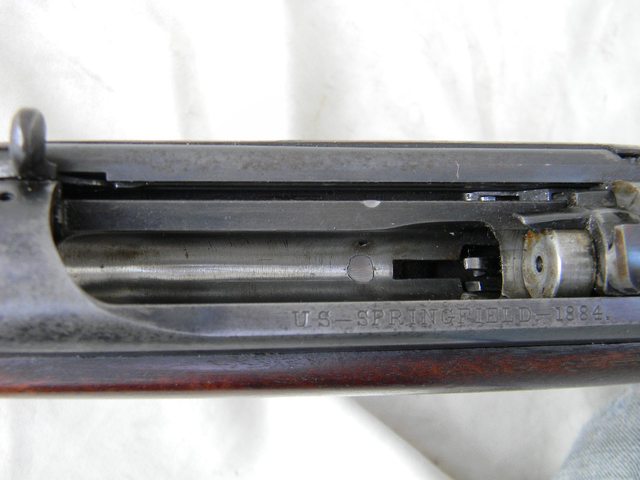
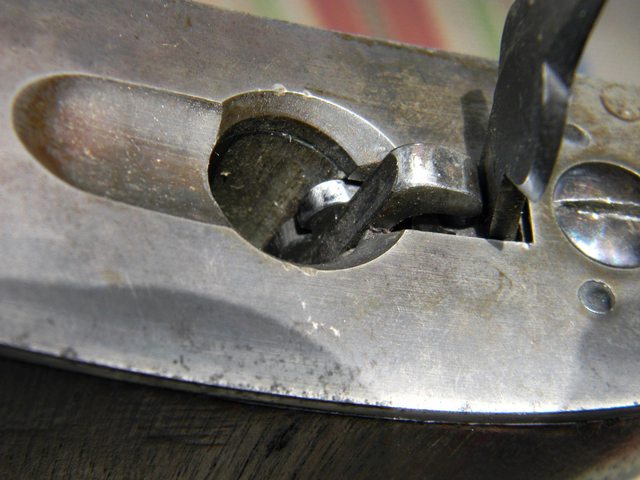
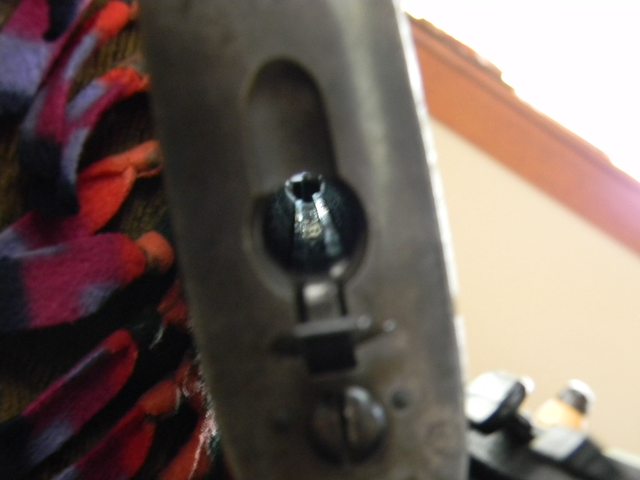

Origins
With the advent of the black powder cartridge rifle, and following the U.S. Civil War, there was roughly a quarter century's worth of innovative long arm development. Many of these designs were literally obsolete before the ink on the drafting blueprint was dry. This journey of growing pains, successes and failures, gave rise to the modern bolt action, smokeless powder cartridge rifle which we know today. One of the detours along the way produced the 1882 Chaffe-Reece.
During the time that the single shot, cartridge loading Springfield Model 1873 Trapdoor in .45-70 was the official U.S. service rifle, several multiple shot, magazine-fed rifles were starting to show promise. Three of them which were authorized for troop trials were the 1879 Remington-Lee with a six round capacity, and a spring-fed detachable magazine under the breech, the 1879 Winchester-Hotchkiss with a six round capacity, and a spring-fed tubular magazine in the buttstock, and the 1882 Chaffe-Reece (built at Springfield Armory in 1884) with a six round capacity, and ratchet bar-fed tubular magazine in the buttstock. Seven hundred fifty each of the three magazine rifles were submitted for trials, and endured approximately one year's worth of field testing against the Springfield Model 1873 Trapdoor. All rifles were chambered in .45-70 Govt.
While the Lee had the most favorable reports, the Hotchkiss second, and the Chaffee-Reece last, none of them ranked well against the utility of the Trapdoor, and no changes to the armament of U.S. Armed Forces were recommend as the result of the trials. It was not until 1892 that the U.S. Army would adopt a bolt action as the main service rifle, the Krag-Jorgensen.
See the following post for the Chief of Ordnance report and Trials test result summary.

Production
Developed by R.S. Chaffee and General J.N. Reece, the original design was licensed with Colt's Patent Fire Arms Manufacturing Company. It is unknown how many prototypes were developed, but only to say that very few came from Colt. When approached by the U.S. Government, Colt could not meet the required 750 trials rifle quota nor price point (only 200 units were promised at $150 each), so the contract was offered to Springfield Armory. My Chaffe-Reece is one of the 753 total units produced at Springfield in 1884, at a cost of $56.28 per unit. None of them were serial numbered. The stock, trigger bow, bands, cleaning rod, swivels and sighting borrowed heavily from the Trapdoor design.

- - - Updated - - -
1882 Chaffee-Reece Features and Operation
The 28 inch barrel has the standard V over P over Eagle stamp. The Model 1879 Trapdoor carbine rear sight is a combination ramp with slider and flip-up leaf. It is calibrated from 1-600 yards on the ramp, and 7-1,400 yards upright. Both the letters 'C-R' (for Chaffe-Reece?) appear on the left base, instead of the usual 'C' which is found on carbine sights, or 'R' for rifle.






The stock has the script circle-P proof behind the trigger guard, and the 1884 cartouche with inspector initials of SM on the upper left rear buttstock. The rear sling swivel is on the front of the trigger bow, front sling and stacking swivels are on the forward barrel band. The standard 'U', for up, is stamped on both front and rear barrel bands.





The Chaffee-Reese was built to accept the standard U.S. socket bayonet for the Trapdoor rifle, to affix with a 90 degree rotation and lockring behind the front sight base. The cleaning rod is also styled after the Trapdoor design.






Now to the tube magazine/bolt/cut-off system. Many remaining examples of the Chaffee-Reece are missing parts or all of the feed system. Mine is fortunately completely intact.
The magazine was not spring loaded, and instead employed a complicated ratchet operation utilizing a lever, cam, and dual bar system, with linear loading through a trap door into a tube in the buttstock. I am not going to disassemble to inspect the magazine system, but I can observe operating function through the trap door while opening and closing the bolt. So I will do my best to describe the complicated operation.
To begin, it was important to the tests that the rifles colud be operated in single and multi-shot modes. As no trigger/sear safety was incorporated, there was a need for half and full-cocked bolt operation.
Cut-off engaged in forward position, single shot mode. Cut-off disengaged in rearward position, magazine feed mode.


Bolt, half and full-cocked positions


One of the drawbacks of the design was the difficulty of takedown for cleaning. I have not field stripped, nor can I find instructions for field stripping. But my experience tells me that a pin must be driven out of the bolt before the release lever can be pulled.


The bolt extractor is connected to a sliding lever along the right lower side of the receiver. The lever follows rearward to the magazine tube and enables the cam and ratcheting motion for cartridge feed.



Please excuse my crude freehand artistic skills! Below is a simplified drawing of the magazine tube and feed mechanism. Two bars are positioned along the bottom length of the tube. The bar on the left is of uniform construction. It has cam operated upward travel to secure the position of the cartridges in the tube when the bolt is either in the fully closed position, or when the bolt is traveling rearward. While the bolt closes on forward motion, the left bar has downward travel to release pressure against the cartridges, allowing them to feed forward.
The cam and lever operated bar on the right has five notches. It travels up and down, forward and rearward. The right bar only has contact with the cartridges during the bolt closing motion, when it feeds the cartridges forward.

Since I did not disassemble, the following pictures are the best I can manage for the tube feed mechanism.





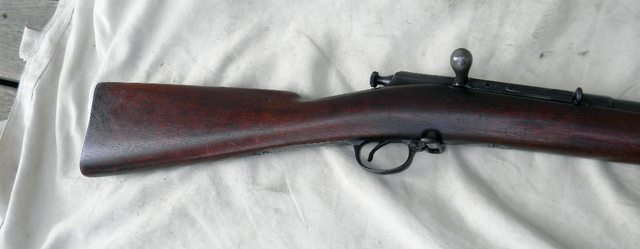
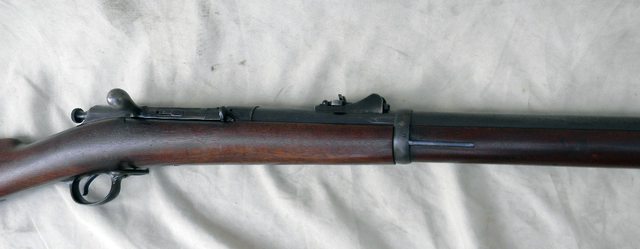
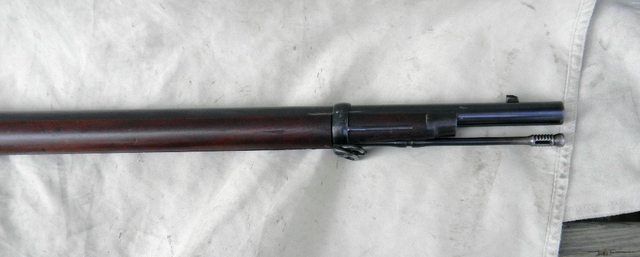
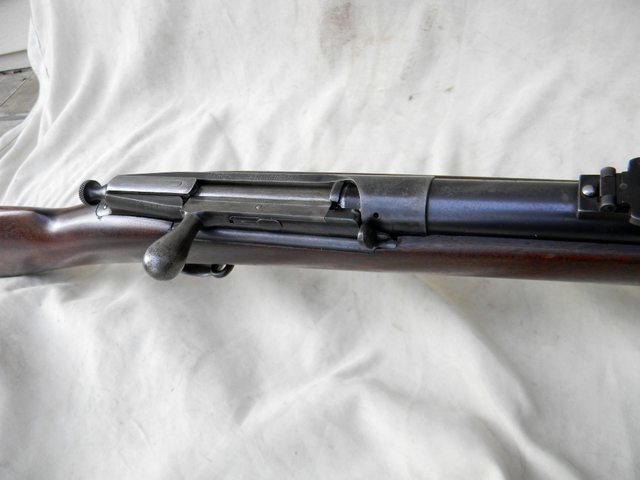
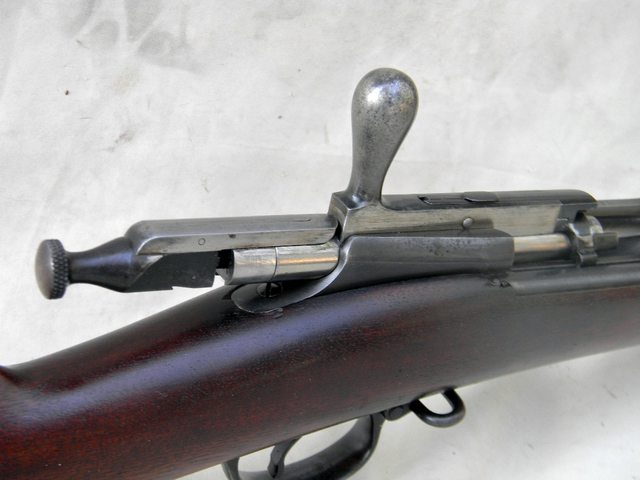
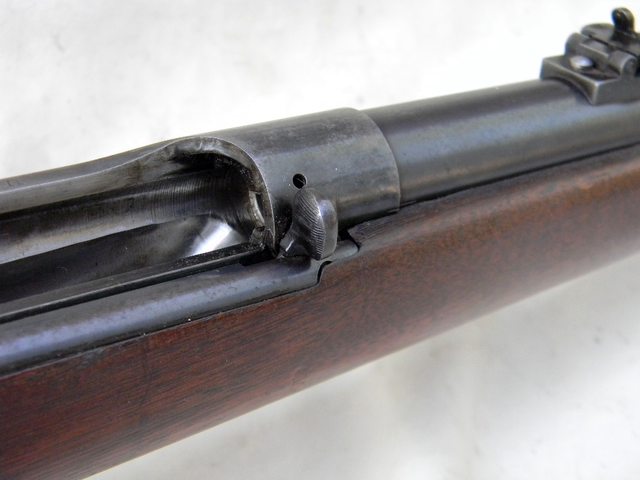
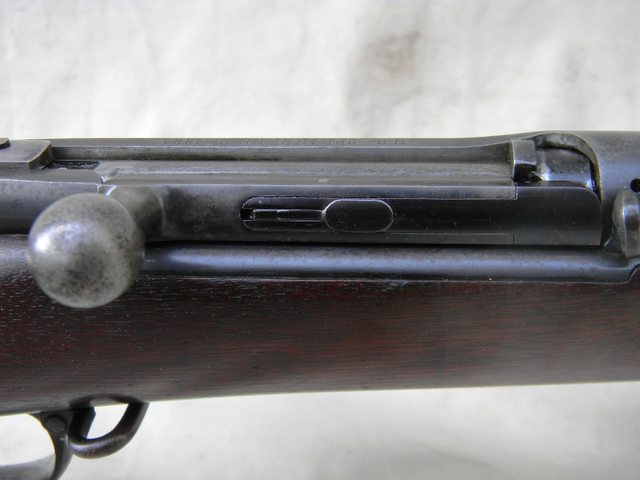
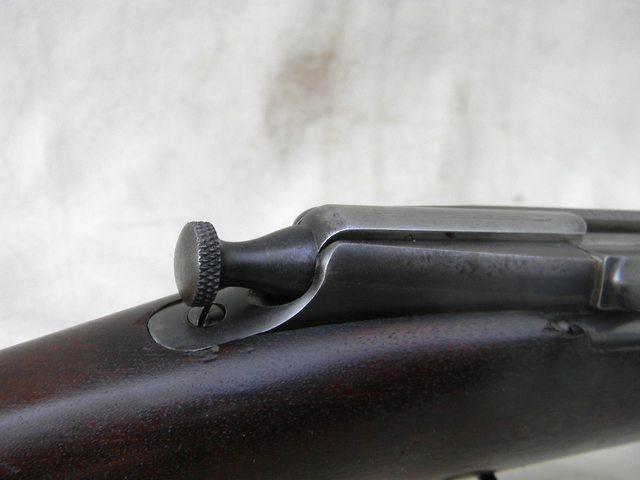
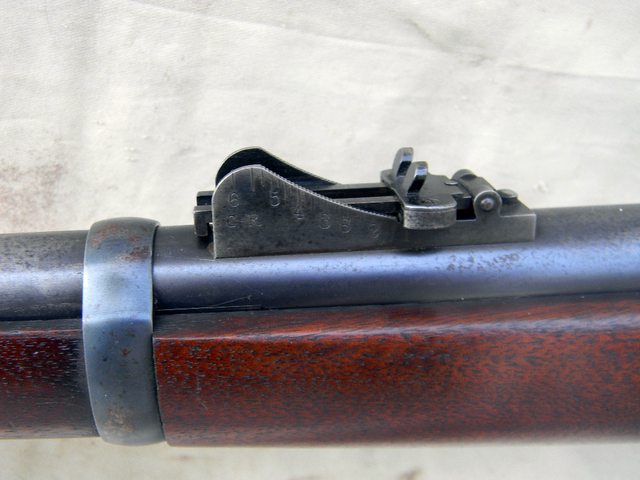
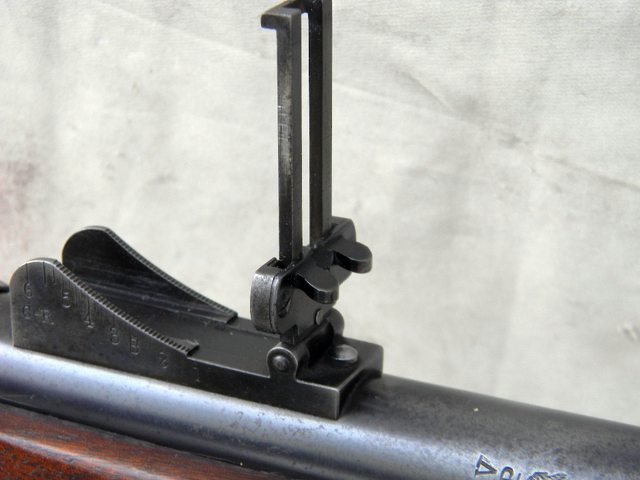
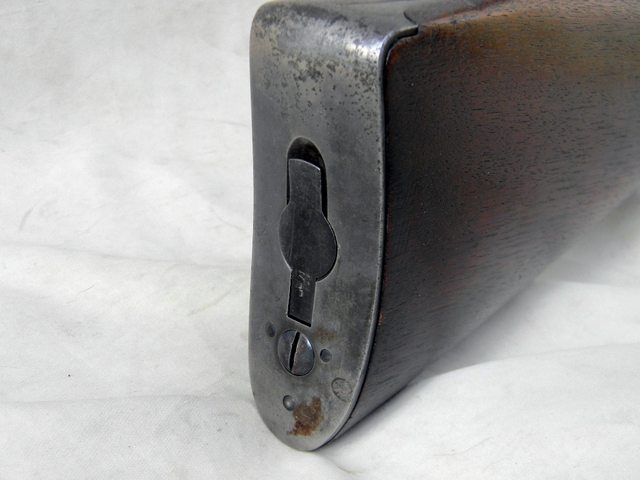
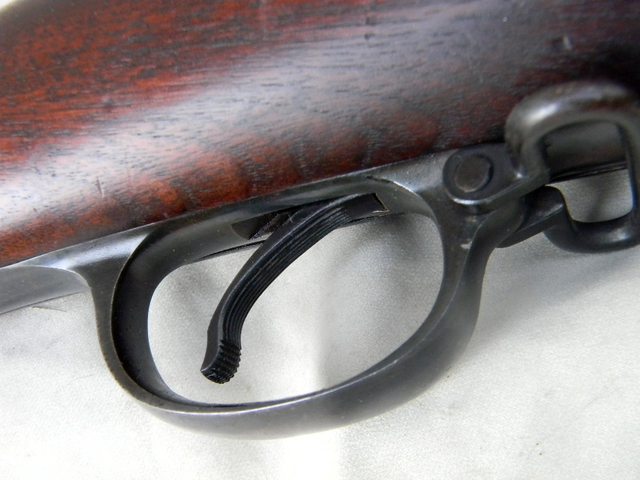
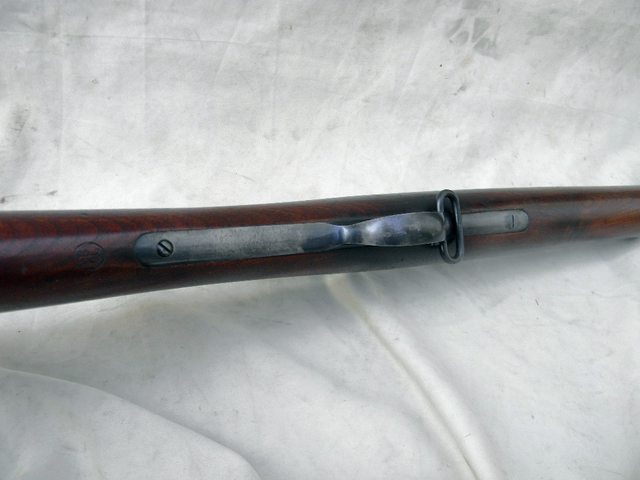
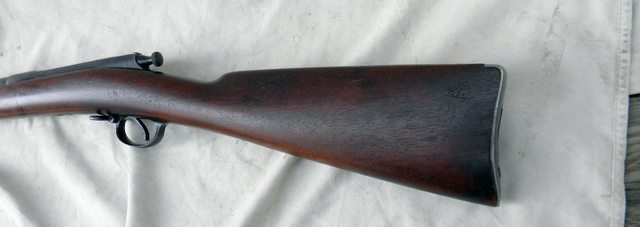
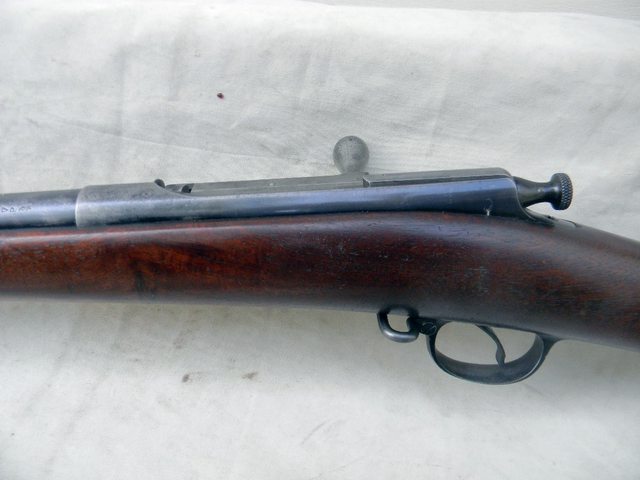
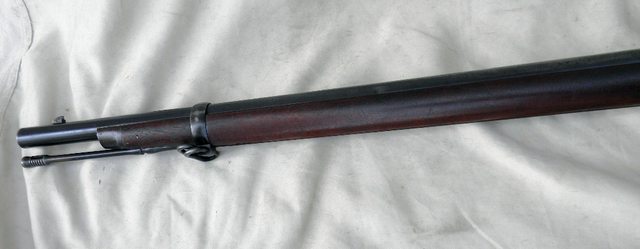
![Bow [bow] [bow]](/xen/styles/default/xenforo/smilies.vb/027.gif)